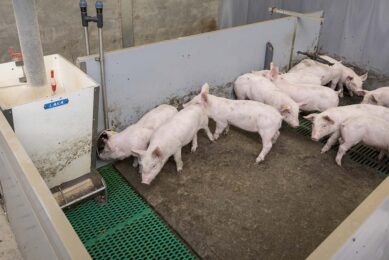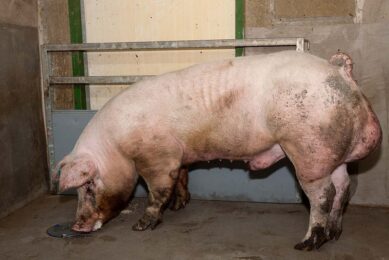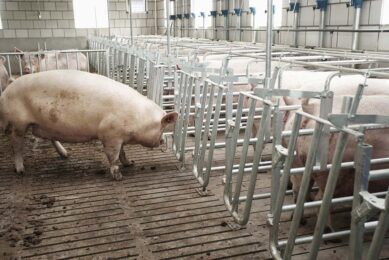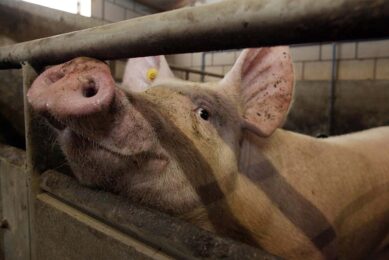Binding butyric acid to glycerol

Gut health is essential for high producing production animals to reach their genetic growth potential. Today, there is a tremendous amount of options to improve gut health with feed additives. One of these options is the addition of butyric acid.
The incredibly bad smell of butyric acid makes it difficult to apply this acid in practice. As a solution, feed additive producers came up with salts of butyric acid. These salts, however, will turn into butyric acid in the acidic environment of the stomach and consequently, will be rapidly absorbed. Therefore, these salts are fat coated in order to release the butyrates further down the intestines with the help of pancreatic lipase. But due to this coating, the relative amount of butyric acid is lower in the product, which results in high dose levels of the feed additive. Another option is to esterify butyric acid to a glycerol molecule.
Function of butyric acid
Butyric acid has been proposed in literature as an alternative to antibiotic growth promoters in broiler diets. Butyric acid belongs to the group of short chain fatty acids, which have shown to have antibacterial activity. It has been suggested that these acids diffuse freely through bacterial cell membranes and dissociate inside the bacterial cell where the pH is far above the pKa of the acid. This leads to a drop of the intracellular pH of the bacterial cell leading to its death. However, the alpha-monoglycerides of these acids are shown to have an even stronger antibacterial effect. Moreover, butyric acid provides energy and appears to stimulate the development of intestinal epithelium. Proper development of the epithelial cells is important for the intestinal integrity, especially when the microbial challenge becomes higher.
As the preventative use of antibiotics is becoming more and more restricted all over the world, intestinal integrity becomes even more critical. Moreover, butyric acid seems to support intestinal development and villi growth of the animal and thus the ability to absorb nutrients.
Glycerides of butyric acid
Next to the fact that the smell of butyric acid needs to be covered, the fatty acid needs to be delivered in the intestinal tract without being immediately absorbed in the stomach or duodenum. Indeed, it has been reported that free butyric acid quickly disappears in the upper digestive tract of fowl. Whereas almost 60% butyric acid was found in the crop, not even 1% was recovered from the upper small intestine. In contrast, triglycerides of butyric acid would deliver relatively high amounts of butyric acid into the small intestine. The bonds between the glycerol and butyric acid molecules obtained during the esterification process are strong and pH independent. Hence, these bonds will not be broken down in the stomach but only by the action of lipase in the small intestine. Thus high levels of butyric acid can be delivered in the small intestine.
The beneficial effect of adding tributyrin, the triglyceride of butyric acid, has been reported in literature. For instance, a trial was conducted to investigate the effect of tributyrin on growth, intestinal digestive function and intestinal barrier function in intrauterine growth-restricted (IUGR) piglets. IUGR piglets have lower neonatal survival, postnatal growth and immunity. Supplementation with tributyrin has shown to significantly improve body weight compared to IUGR piglets which did not receive tributyrin. Also intestinal villus was healthier and villus surface was larger in the piglets fed tributyrin, resulting in proper nutrient absorption and increased growth.
The butyric acids released from a tributyrin will mainly serve to fuel the epithelium cells. However, in literature it has been clearly described that alpha-monoglycerides of fatty acids have stronger anti-bacterial effects. Framelco believes that a combination of alpha-monobutyrin and tributyrin will combine gut health, intestinal integrity and microbial control, especially with young animals in times of high bacterial challenge without the use of antibiotic growth promoters. On the one hand, the antibacterial effect of alpha-monobutyrin helps to control the intestinal microflora, whereas the butyric acids released from tributyrin will provide extra energy for gut development resulting in a better intestinal integrity and immune status and an improved nutrient absorption.
Butyrate-based feed additives
In the beginning of 2016, a broiler performance trial was conducted at the research facilities of Schothorst Feed Research, the Netherlands. A negative control group and five treatment groups were used to compare different butyrate based feed additives. Two of the products tested were experimental blends and will not be discussed here. In total 480 one-day-old male broiler chickens (Ross 308) were used for the four groups being discussed. Each group had six replicates of 20 birds each with an average starting body weight of 42.6 g. All animals received the same basal diet, but supplemented with different sources of butyric acid (see Table 1).
Feed intake and body weight were determined per pen. Results of the whole period are shown in Table 2. Performances of all treatment groups were very good, partially due to the lower stocking density than under commercial conditions. However, all butyrate-based feed additives were able to improve broiler performances in a comparable way without statistical differences between treatments.
The aim of this trial was to compare the efficacy of two different sources of butyric acid, a coated salt of butyric acid versus a triglyceride of butyric acid. Since FRA Butyrin Ultra Dry contains twice as much butyric acid compared to the coated salt of butyric acid, the dosage had to be halved. At equal levels of butyric acid per ton of feed, performance results are very comparable in this trial, which makes FRA Butyrin Ultra Dry economically more interesting.
Additionally, FRA Butyrin Hybrid Dry was tested. As this trial was conducted at a research facility with relatively low bacterial challenge, it is expected that the FRA Butyrin Hybrid Dry, including also alpha-monobutyrin, would result in an extra beneficial effect under practical conditions with more bacterial challenge. This is expected because of the well-known antibacterial properties of alpha-monobutyrin.
References available upon request
Join 18,000+ subscribers
Subscribe to our newsletter to stay updated about all the need-to-know content in the pigsector, three times a week. Beheer
Beheer










 WP Admin
WP Admin  Bewerk bericht
Bewerk bericht